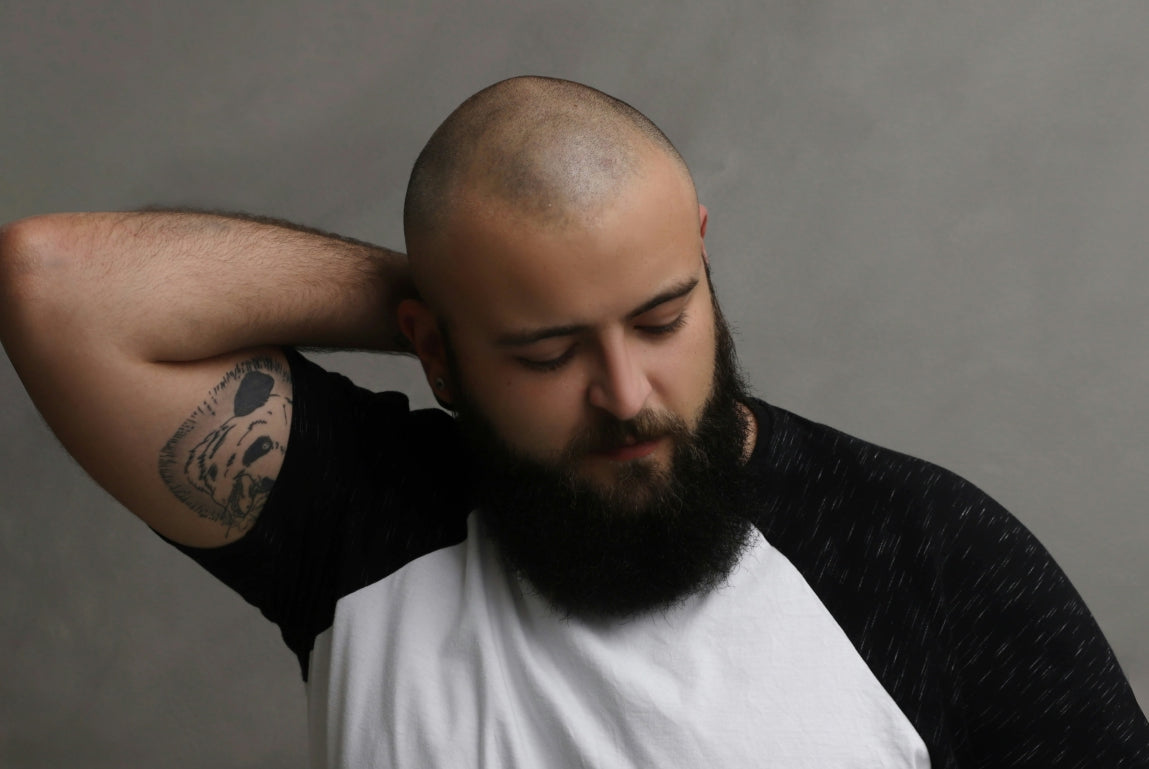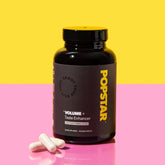

Table of Contents
Key Takeaways
Testosterone isn’t the villain—DHT is.
5-alpha-reductase converts testosterone into DHT.
Sensitivity to DHT varies based on genetics.
TRT can accelerate hair loss in predisposed people.
Lifestyle and nutritional factors matter.
Let’s start with a truth bomb: testosterone alone isn’t sneakily tiptoeing through your follicles in the dead of night, yanking out your hair one strand at a time. Nope. The real suspect? A hormonal hitman called dihydrotestosterone, or DHT. He's testosterone's more aggressive little brother, converted via the enzyme 5-alpha-reductase. And in many cases of hair loss, especially male pattern baldness (aka androgenetic alopecia), this guy’s the real follicle foe.
But before you storm the pharmacy demanding a bottle of DHT blockers, let’s slow down and actually understand what’s happening.
What Is Testosterone, and Why Does It Get Blamed?
Testosterone is the VIP of male hormones. It fuels your libido, muscles, mood, red blood cell production, and more. But it often gets wrongfully blamed for baldness, like the guy at a party who didn’t do anything but still gets kicked out.
Here’s what actually happens: testosterone gets converted into DHT thanks to 5-alpha-reductase. DHT binds to androgen receptors in your hair follicles—especially those genetically predisposed to sensitivity—and tells them, “Hey, let’s make this hair thinner and weaker with every cycle.” Eventually, those hairs become so wispy they ghost you completely.
This is the playbook for androgenetic alopecia, the most common form of hormonal hair loss.
The Hair Growth Cycle: A Quick (and Slightly Tragic) Overview
Hair doesn’t just grow, chill, and stay forever. Each strand has a life cycle:
Anagen (Growth): The hair is thriving, alive, and full of dreams. This phase can last years.
Catagen (Transition): Hair stops growing and starts to detach from its blood supply. Kind of like when your ex "needed space."
Telogen (Rest): Hair hangs out, doing nothing, before falling out and letting the cycle start over.
In androgenetic alopecia, DHT hijacks this cycle. It shortens the growth phase and extends the resting one, leaving your scalp with less of a fighting chance.
Why DHT Is the Real Villain (and Why Some Guys Get Hit Harder Than Others)
Not all scalps respond to DHT equally. That’s where genetics, DHT sensitivity, and levels of 5-alpha-reductase come in. One guy can have high testosterone and a glorious mane, while another with moderate levels finds himself Googling “best hats for thinning hair.”
DHT binds to androgen receptors in the hair follicle, especially in the temples and crown. Over time, those follicles shrink (called hair follicle miniaturization) and eventually tap out.
Some guys are walking Petri dishes of 5-alpha-reductase. Others have follicles that roll over the second DHT walks into the room. The difference? Genes.
TRT: Testosterone Replacement Therapy & Your Hairline
If you’re on testosterone replacement therapy (TRT) or thinking about it, you might be wondering if it’ll fast-track you to cue-ball territory. The answer? It depends.
TRT can raise testosterone levels, which can lead to more DHT production if you’re prone to high 5-alpha-reductase activity. That can accelerate androgenetic alopecia in genetically predisposed individuals. It doesn’t cause hair loss in people not already wired for it, but it can unmask a lurking baldness gene.
This is why some docs will pair TRT with a 5-alpha-reductase inhibitor like finasteride to reduce the conversion of testosterone to DHT.
The Bald Truth: It’s Not Just About Hormones
Hair loss isn’t just a hormone drama. Nutrition, stress, and sleep can all make things worse. Low levels of vitamin D, iron, and zinc are known culprits. Chronic stress spikes cortisol, which disrupts your hormonal balance and leads to inflammation that isn’t follicle-friendly.
And if your sleep sucks? So will your testosterone production. Most testosterone is produced during REM sleep. Sleep like trash = hormones like trash = hairline that’s trash.
Hair Loss Treatments: What Actually Works
There’s a lot of snake oil out there, so let’s focus on what science supports:
Finasteride: A 5-alpha-reductase inhibitor that reduces DHT. Effective, but can have side effects.
Dutasteride: Same as above but stronger. Blocks both Type I and Type II forms of the enzyme.
Minoxidil: A topical that boosts blood flow to hair follicles. Doesn’t stop DHT, but helps some follicles hang on.
DHT-blocking shampoos: Helpful as a support act. Look for ones with ketoconazole.
Hair Transplants: Moving follicles that aren’t DHT-sensitive to balding areas. Works well but pricey.
PRP (Platelet-Rich Plasma): Your blood, spun into gold (well, platelet-rich plasma) and injected into your scalp.
LLLT (Low-Level Laser Therapy): Laser helmets and combs. Results vary, but hey, it makes you look like you’re trying.
Lifestyle Habits That Help
No, eating kale won’t cure male pattern baldness. But cleaning up your diet, exercising, and managing stress can support better scalp health.
Focus on:
Protein (hair is made of keratin)
Zinc
Iron
Vitamin D
Healthy fats (for hormone support)
If your hormones are borderline, improving your diet and sleep may help rebalance testosterone levels naturally—no injections required.
The Female Side of the Follicle Fight
Women also experience hormonal hair loss, especially with conditions like PCOS, where elevated androgens can lead to androgenetic alopecia.
In women, treatments often include:
Spironolactone (an anti-androgen)
Birth control pills (to regulate hormone levels)
Nutritional interventions
Ladies, don’t suffer in silence. A dermatologist or endocrinologist can help tailor a treatment plan.
Final Word on Follicles
Blaming testosterone for baldness is like blaming your wingman for getting rejected at the bar. He was part of the equation, but the real problem was somewhere else.
In the hair loss game, DHT is the one to watch—and block. Whether it’s through meds like finasteride, lifestyle upgrades, or new treatments in the pipeline, you’ve got options.
Stay bold. Stay smooth. Or stay fuzzy—whatever works for you.
Frequently Asked Questions
Does testosterone cause hair loss?
Not directly. DHT, a byproduct of testosterone via 5-alpha-reductase, is the real problem.
What is androgenetic alopecia?
A genetic condition (aka male pattern baldness) where DHT causes hair follicle miniaturization.
Are DHT blockers safe?
Finasteride and dutasteride are FDA-approved, but they come with potential side effects. Talk to your doctor.
Can women have hair loss from testosterone?
Yes. Conditions like PCOS can raise androgen levels and cause thinning in women too.
Will TRT make me go bald?
Only if you’re already genetically prone. TRT can increase DHT, which may accelerate existing tendencies.











